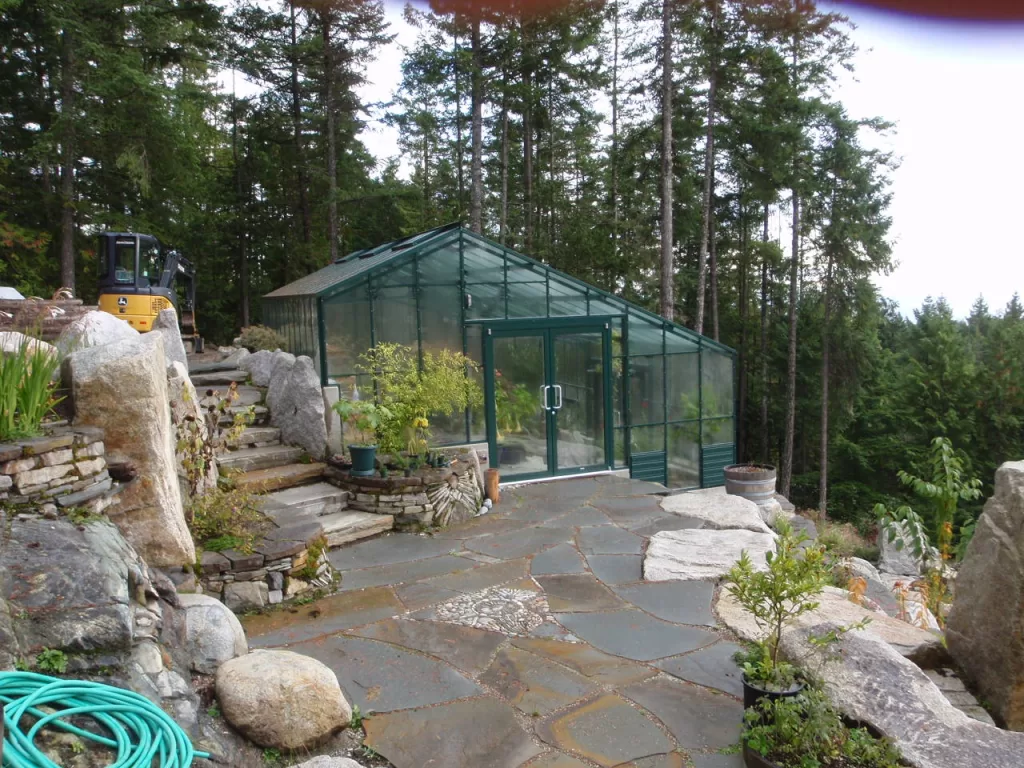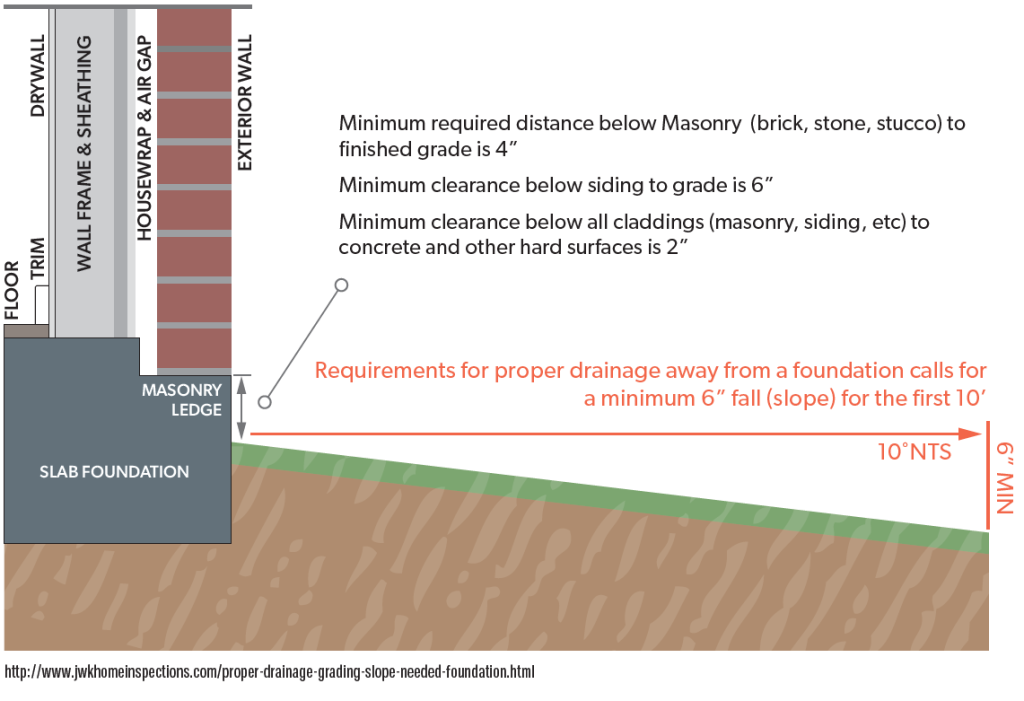
We often get asked if it’s possible to build a greenhouse on a sloped yard, and we’re here to tell you that it can be done! While it may require some extra effort and planning, creating a suitable site for your greenhouse is within reach. All it takes is a bit of determination and some elbow grease.
The first step is selecting the type and size of your greenhouse. As you can guess, a glass greenhouse is much heavier and requires a stable foundation especially if you live in a cold climate that is subject to frost heaves.
The next step is deciding what type of foundation you plan to build. Do you want a permanent concrete slab or wall, or do you think you might want something you could potentially move? The most important thing to consider is that that foundation must be level and square with no beveled edges to properly install the greenhouse. Read more about building a foundation here and scroll below for site preparation tips.
If the location is relatively flat, good for you! Clear the site of debris, rocks, and roots and get started on your foundation. If your site is on a slope, you will first need to determine what the slope is:
Calculating the slope of a landscape is the same as calculating the slope of points on a graph, a playground slide, or a skate ramp. Find the rise: the difference in elevation between the high and low ends of the slope. Find the run: the horizontal distance between the two ends of the slope. Then divide the rise by the run. Having a steep slope can lead to erosion problems. Flat ground that doesn’t slope is prone to flooding. A slope of 1 foot in rise per 50 feet of run is ideal for proper drainage.
Place a stake in the ground at the highest point on the slope you wish to calculate. Place stakes every 8 feet along the line of the slope until you get to the lowest point where the water will drain.
Tie a string to the bottom of the top stake at ground level. Stretch the string to the next stake and wrap it loosely around the stake. Use a level to check that the string is level. Move the string up or down until the level is correct, then tie the string to the stake. Repeat until you have reached the bottom stake.
Measure the length of the string. Measure the distance from the ground to the string on the lowest stake. Make sure your measurements use the same units, either inches or feet. A 50-foot run and a 12-inch rise should be calculated using 600 inches and 12 inches, or 50 feet and 1 foot, but not a mixture of the two.
The next step is to begin excavating to create a reasonable flat site for the greenhouse. Some consideration to drainage is recommended. Pooling water or rainwater draining into the greenhouse is not a good idea. Drainage should be designed to move away from the greenhouse including run-off water.
If the slope is considerable, you might have to build a retaining wall to support the soil.
Keep in mind the lower that you dig, the cooler the area will become. In some climates, a cold pocket might be a benefit but for those that need to heat the greenhouse, additional utility costs should be factored in.
Creating a stable and level site will simplify the greenhouse installation greatly. It will also help to ensure the longevity and the strength of the greenhouse when harsh weather conditions take place.
For more information on greenhouse foundations, please visit https://info.bcgreenhouses.com/preparing-a-greenhouse-foundation.

REFERENCE: HOW TO CALCULATE A SLOPE IN LANDSCAPING BY JILL KOKEMULLER, VIA HOME GUIDES